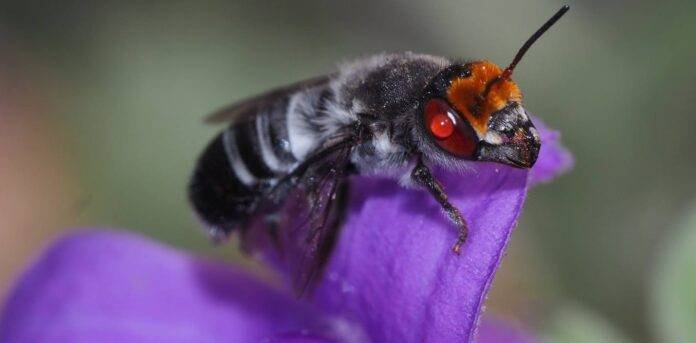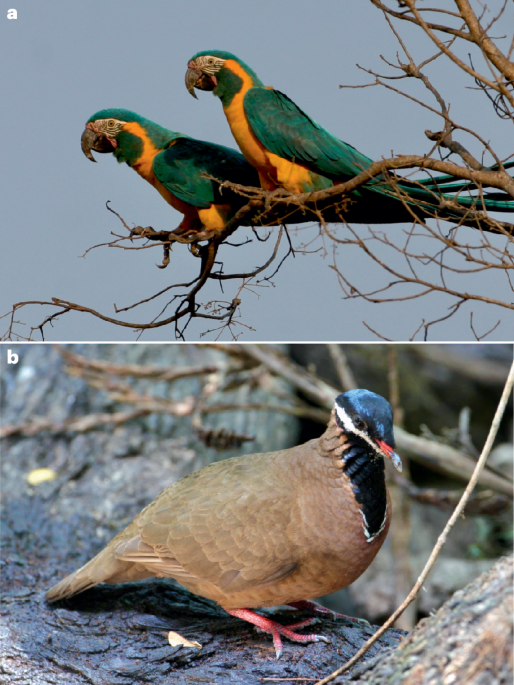Miller, C. E. et al. The ABoVE L-band and P-band airborne synthetic aperture radar surveys, Earth Syst. Sci. Data 16, 2605–2624, https://doi.org/10.5194/essd-16-2605-2024 (2024).
Rantanen, M. et al. The Arctic has warmed nearly four times faster than the globe since 1979. Commun Earth Environ 3, 168, https://doi.org/10.1038/s43247-022-00498-3 (2022).
Myers-Smith, I. H. et al. Shrub expansion in tundra ecosystems: dynamics, impacts and research priorities. Environmental Research Letters 6(4), 045509, https://doi.org/10.1088/1748-9326/6/4/045509 (2011).
Heijmans, M. M. P. D. et al. Tundra vegetation change and impacts on permafrost. Nat Rev Earth Environ 3, 68–84, https://doi.org/10.1038/s43017-021-00233-0 (2022).
Jones, B. M. et al. Lake and drained lake basin systems in lowland permafrost regions. Nat Rev Earth Environ 3, 85–98, https://doi.org/10.1038/s43017-021-00238-9 (2022).
Miner, K. R. et al. Permafrost carbon emissions in a changing Arctic. Nat Rev Earth Environ 3, 55–67, https://doi.org/10.1038/s43017-021-00230-3 (2022).
Miller, C. E. et al. An overview of ABoVE airborne campaign data acquisitions and science opportunities. Environmental Research Letters 14(8), 080201, https://doi.org/10.1088/1748-9326/ab0d44 (2019).
Stavros, E. N. et al. Designing an observing system to study the Surface Biology and Geology (SBG) of the Earth in the 2020s. Journal of Geophysical Research: Biogeosciences 128, e2021JG006471, https://doi.org/10.1029/2021JG006471 (2023).
Raiho, A. M. et al. Exploring mission design for imaging spectroscopy retrievals for land and aquatic ecosystems. Journal of Geophysical Research: Biogeosciences 128(4), e2022JG006833, https://doi.org/10.1029/2022JG006833 (2023).
Nieke, J. et al. The copernicus hyperspectral imaging mission for the environment (CHIME): an overview of its mission, system and planning status. Sensors, Systems, and Next-Generation Satellites XXVII 12729: 21-40. https://doi.org/10.1117/12.2679977 (2023).
Thompson, D. R. et al. On-orbit calibration and performance of the EMIT imaging spectrometer. Remote Sensing of Environment 303, 113986, https://doi.org/10.1016/j.rse.2023.113986 (2024).
Coleman, R. W. et al. An accuracy assessment of the surface reflectance product from the EMIT imaging spectrometer. Remote Sensing of Environment 315, 114450, https://doi.org/10.1016/j.rse.2024.114450 (2024).
Gorman, E. T. et al. The NASA Plankton, Aerosol, Cloud, ocean Ecosystem (PACE) mission: an emerging era of global, hyperspectral Earth system remote sensing. In Sensors, systems, and next-generation satellites XXIII (Vol. 11151, pp. 78-84). SPIE. https://doi.org/10.1117/12.2537146 (2019, October).
Buongiorno, M. F. et al. Asi-Prisma Hyperspectral Mission for the Analysis of Geophysical Phenomena. In 2021 IEEE International Geoscience and Remote Sensing Symposium IGARSS (pp. 8099-8102). IEEE. https://doi.org/10.1109/IGARSS47720.2021.9553103 (2021, July).
Guanter, L. et al. The EnMAP spaceborne imaging spectroscopy mission for earth observation. Remote Sensing 7(7), 8830–8857, https://doi.org/10.3390/rs70708830 (2015).
Montesano, P. M. et al. Patterns of regional site index across a North American boreal forest gradient. Environmental Research Letters 18(7), 075006, https://doi.org/10.1088/1748-9326/acdcab (2023).
Pitcher, L. H. et al. Advancing field-based GNSS surveying for validation of remotely sensed water surface elevation products. Frontiers in Earth Science 8, 278, https://doi.org/10.3389/feart.2020.00278 (2020).
Sweeney, C. et al. Using atmospheric trace gas vertical profiles to evaluate model fluxes: a case study of Arctic-CAP observations and GEOS simulations for the ABoVE domain. Atmos. Chem. Phys. 22, 6347–6364, https://doi.org/10.5194/acp-22-6347-2022 (2022).
Fayne, J. V. et al. Airborne observations of arctic-boreal water surface elevations from AirSWOT Ka-Band InSAR and LVIS LiDAR. Environmental Research Letters, 15(10), p.105005, https://doi.org/10.1088/1748-9326/abadcc (2020).
Wang, C. et al. Quantification of wetland vegetation communities features with airborne AVIRIS-NG, UAVSAR, and UAV LiDAR data in Peace-Athabasca Delta. Remote Sensing of Environment 294, 113646, https://doi.org/10.1016/j.rse.2023.113646 (2023).
Mederer, D. et al. Plant trait retrieval from hyperspectral data: Collective efforts in scientific data curation outperform simulated data derived from the PROSAIL model. ISPRS Open Journal of Photogrammetry and Remote Sensing 15, 100080, https://doi.org/10.1016/j.ophoto.2024.100080 (2025).
Smith, C. W., Panda, S. K., Bhatt, U. S. & Meyer, F. J. Improved boreal forest wildfire fuel type mapping in interior alaska using aviris-ng hyperspectral data. Remote Sensing 13(5), 897, https://doi.org/10.3390/rs13050897 (2021).
Badola, A. et al. Hyperspectral data simulation (sentinel-2 to aviris-ng) for improved wildfire fuel mapping, Boreal Alaska. Remote Sensing 13(9), 1693, https://doi.org/10.3390/rs13091693 (2021).
Badola, A. et al. A novel method to simulate AVIRIS-NG hyperspectral image from Sentinel-2 image for improved vegetation/wildfire fuel mapping, boreal Alaska. International Journal of Applied Earth Observation and Geoinformation 112, 102891, https://doi.org/10.1016/j.jag.2022.102891 (2022).
Badola, A. et al. Estimation and Validation of Sub-Pixel Needleleaf Cover Fraction in the Boreal Forest of Alaska to Aid Fire Management. Remote Sensing 15(10), 2484, https://doi.org/10.3390/rs15102484 (2023).
Elder, C. D. et al. Airborne mapping reveals emergent power law of arctic methane emissions. Geophysical Research Letters 47(3), e2019GL085707, https://doi.org/10.1029/2019GL085707 (2020).
Elder, C. D. et al. Characterizing methane emission hotspots from thawing permafrost. Global Biogeochemical Cycles 35(12), e2020GB006922, https://doi.org/10.1029/2020GB006922 (2021).
Baskaran, L. et al. Geomorphological patterns of remotely sensed methane hot spots in the Mackenzie Delta, Canada. Environmental Research Letters 17(1), 015009, https://doi.org/10.1088/1748-9326/ac41fb (2022).
Clark, J. A. et al. Do beaver ponds increase methane emissions along Arctic tundra streams? Environ. Res. Lett. 18, 075004, https://doi.org/10.1088/1748-9326/acde8e (2023).
Yoseph, E. et al. Tundra fire increases the likelihood of methane hotspot formation in the Yukon–Kuskokwim Delta, Alaska, USA. Environmental Research Letters 18(10), 104042, https://doi.org/10.1088/1748-9326/acf50b (2023).
Borchardt, J. et al. Detection and quantification of CH4 plumes using the WFM-DOAS retrieval on AVIRIS-NG hyperspectral data. Atmos. Meas. Tech. 14, 1267–1291, https://doi.org/10.5194/amt-14-1267-2021 (2021).
Nelson, P. R. et al. Remote sensing of tundra ecosystems using high spectral resolution reflectance: opportunities and challenges. Journal of Geophysical Research: Biogeosciences 127(2), e2021JG006697, https://doi.org/10.1029/2021JG006697 (2022).
Yang, D. et al. Integrating very-high-resolution UAS data and airborne imaging spectroscopy to map the fractional composition of Arctic plant functional types in Western Alaska. Remote Sensing of Environment 286, 113430, https://doi.org/10.1016/j.rse.2022.113430 (2023).
Pierrat, Z. A. et al. Seasonal timing of fluorescence and photosynthetic yields at needle and canopy scales in evergreen needleleaf forests. Ecology 105(10), e4402, https://doi.org/10.1002/ecy.4402 (2024).
Pierrat, Z. A. et al. Proximal remote sensing: an essential tool for bridging the gap between high‐resolution ecosystem monitoring and global ecology. New Phytologist. https://doi.org/10.1111/nph.20405 (2025).
Green, R. O. & Team, C. New measurements of the earth’s spectroscopic diversity acquired during the AVIRIS-NG campaign to India. In 2017 IEEE International Geoscience and Remote Sensing Symposium (IGARSS) (pp. 3066-3069). IEEE. https://doi.org/10.1109/IGARSS.2017.8127646 (2017, July).
Bhattacharya, B. K. et al. An overview of AVIRIS-NG airborne hyperspectral science campaign over India. Current Science 116(7), 1082–1088, https://www.jstor.org/stable/27138000 (2019).
Duren, R. M. et al. California’s methane super-emitters. Nature 575, 180–184, https://doi.org/10.1038/s41586-019-1720-3 (2019).
Hamlin, L. et al. Imaging spectrometer science measurements for terrestrial ecology: AVIRIS and new developments. In 2011 Aerospace conference (pp. 1-7). IEEE. https://doi.org/10.1109/AERO.2011.5747395 (2011, March).
Green, R. O. et al. Airborne Visible/Infrared Imaging Spectrometer 3 (AVIRIS-3). In 2022 IEEE Aerospace Conference (AERO) (pp. 1-10). IEEE. https://www.doi.og/10.1109/AERO53065.2022.9843565 (2022, March).
Chapman, J. W. et al. Spectral and radiometric calibration of the next generation airborne visible infrared spectrometer (AVIRIS-NG). Remote Sensing 11(18), 2129, https://doi.org/10.3390/rs11182129 (2019).
Eckert, R. et al. AVIRIS-3: Next-Generation Imaging Spectroscopy Calibration and First Results. In IGARSS 2024-2024 IEEE International Geoscience and Remote Sensing Symposium (pp. 289-291). IEEE. https://doi.org/10.1109/IGARSS53475.2024.10641513 (2024, July).
Bohn, N., Brodrick, P., Montgomery, J. & Thompson, D. Advances in Imaging Spectrometer Atmospheric Correction with the Open-Source ISOFIT Codebase. In IGARSS 2023-2023 IEEE International Geoscience and Remote Sensing Symposium (pp. 1253–1256). IEEE. https://doi.org/10.1109/IGARSS52108.2023.10282637 (2023, July).
Eckert, R., Mauceri, S., Thompson, D. R., Fahlen, J. E. & Brodrick, P. G. Spatially constrained atmosphere and surface retrieval for imaging spectroscopy. Remote Sensing of Environment 300, 113902, https://doi.org/10.1016/j.rse.2023.113902 (2024b).
Schaepman-Strub, G., Schaepman, M. E., Painter, T. H., Dangel, S. & Martonchik, J. V. Reflectance quantities in optical remote sensing—Definitions and case studies. Remote sensing of environment 103(1), 27–42, https://doi.org/10.1016/j.rse.2006.03.002 (2006).
Thompson, D. R. et al. Optimal estimation for imaging spectrometer atmospheric correction. Remote sensing of environment 216, 355–373, https://doi.org/10.1016/j.rse.2018.07.003 (2018).
Brodrick, P. G. et al. Generalized radiative transfer emulation for imaging spectroscopy reflectance retrievals. Remote Sensing of Environment 261, 112476, https://doi.org/10.1016/j.rse.2021.112476 (2021).
Berk, A. & Hawes, F. Validation of MODTRAN® 6 and its line-by-line algorithm. Journal of Quantitative Spectroscopy and Radiative Transfer 203, 542–556, https://doi.org/10.1016/j.jqsrt.2017.03.004 (2017).
Thompson, D. R. et al. Spectroscopic imaging of sub-kilometer spatial structure in lower-tropospheric water vapor. Atmos. Meas. Tech. 14, 2827–2840, https://doi.org/10.5194/amt-14-2827-2021 (2021).
Schaepman, M. E. et al. Earth system science related imaging spectroscopy – an assessment. Remote Sens. Environ. 113, S123–S137, https://doi.org/10.1016/j.rse.2009.03.001 (2009).
Miller, C. E. et al. ABoVE: AVIRIS-NG Imaging Spectroscopy for Alaska, Canada, and Iceland, 2017-2022, V3. ORNL DAAC, Oak Ridge, Tennessee, USA. https://doi.org/10.3334/ORNLDAAC/2362 (2024).
Miller, C. E. et al. ABoVE: Hyperspectral Imagery AVIRIS-NG, Alaskan and Canadian Arctic, 2017-2019 V2. ORNL DAAC, Oak Ridge, Tennessee, USA. https://doi.org/10.3334/ORNLDAAC/2009 (2022).
Eckert, R. et al. AVIRIS-3 L1B Calibrated Radiance, Facility Instrument Collection. ORNL DAAC, Oak Ridge, Tennessee, USA. https://doi.org/10.3334/ORNLDAAC/2356 (2024).
Hestir, E. L., Wilson, A., Cardoso, A., Slingsby, J. & Forbes, C. The NASA Biodiversity Survey of the Cape (BioSCape). In Hyperspectral/Multispectral Imaging and Sounding of the Environment (pp. HM2C-3). Optica Publishing Group. https://doi.org/10.1364/HMISE.2023.HM2C.3 (2023, July).
Carmon, N. et al. Unified topographic and atmospheric correction for remote imaging spectroscopy. Frontiers in Remote Sensing 3, 916155, https://doi.org/10.3389/frsen.2022.916155 (2022).
Carmon, N. et al. Shape from spectra. Remote Sensing of Environment 288, 113497, https://doi.org/10.1016/j.rse.2023.113497 (2023).
Cavender-Bares, J., Gamon, J. A. & Townsend, P. A. eds. Remote sensing of plant biodiversity (pp. 581). Springer Nature. https://library.oapen.org/handle/20.500.12657/39986 (2020).
Harris, J. A. et al. Understanding the climate impacts on decadal vegetation change in northern Alaska. Arctic Science 8(3), 878–898, https://doi.org/10.1139/as-2020-0050 (2021).






